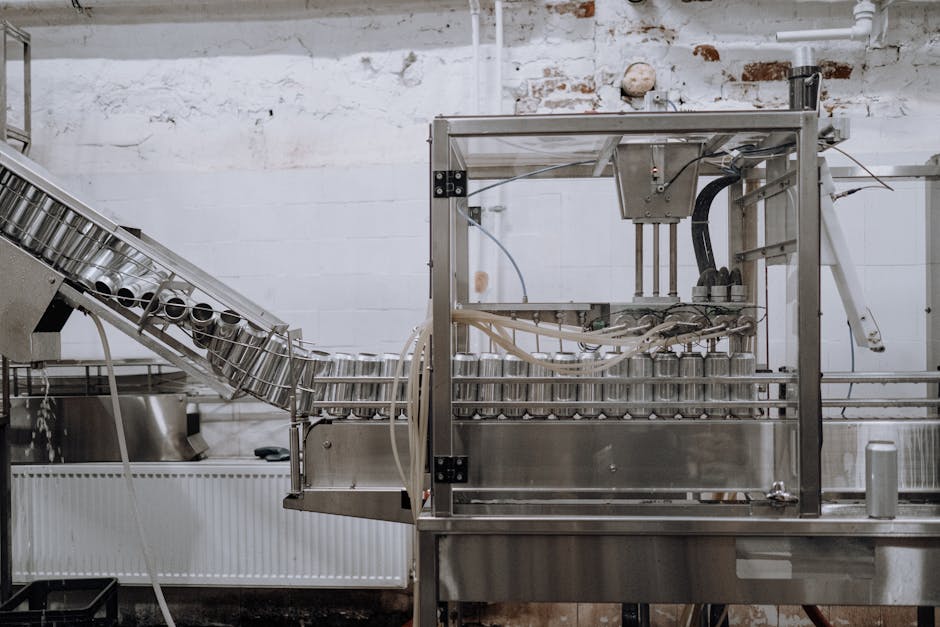What are Assembly Solutions?
Assembly solutions (AS) refer to innovative methods used in various industries to streamline the assembly process of products. These solutions aim to improve efficiency, reduce errors, and enhance productivity in manufacturing settings. Through automation and advanced technologies, assembly solutions have revolutionised traditional production methods.
What is the importance of AS in Modern Industries?
Assembly solutions play a crucial role in modern industries by streamlining production processes and improving efficiency. Companies are investing in assembly solutions to enhance productivity and quality control. These solutions help in assembling products faster and more accurately, reducing errors and optimising workflow.
Automation is a key component of assembly solutions, allowing tasks to be performed with precision and speed. By integrating assembly solutions, industries can meet increasing consumer demands and stay competitive in the market.
Types of Assembly Solutions Available
There are different types of AS in the market today, each designed to meet specific needs in various industries.
Here are some common options you may come across:
- Manual Assembly: Involves workers assembling products by hand, suitable for smaller scale production and customisation.
- Automated Assembly: Uses machines and robots to assemble products quickly and efficiently, ideal for high-volume production lines.
- Semi-Automated Assembly: Combines human workers with machines to streamline the assembly process, offering a balance between manual and automated systems.
- Customised Assembly Systems: Tailored solutions designed to meet unique production requirements, offering flexibility and precision.
What are the advantages of implementing AS?
AS can greatly benefit modern industries by streamlining production processes, improving efficiency, and reducing costs.
Some key advantages of implementing assembly solutions include:
- Increased Productivity: AS automate repetitive tasks, allowing workers to focus on more complex and value-added activities, ultimately boosting productivity.
- Enhanced Quality Control: These solutions can ensure consistent quality by standardising assembly processes and reducing the likelihood of human error.
- Cost Savings: By optimising production workflows and reducing labor costs, assembly solutions can lead to significant cost savings for businesses.
- Flexibility and Scalability: Businesses can easily adapt AS to meet changing production demands and scale their operations as needed.
- Competitive Edge: Implementing AS can give companies a competitive edge by increasing production speed and efficiency, leading to faster time-to-market for products.
How are assembly solutions cost effective?
AS can significantly reduce production costs for industries. By streamlining the assembly process, companies can lower labor costs and increase efficiency. Studies have shown that implementing assembly solutions can lead to savings of up to 30% in production expenses. Additionally, the initial investment in assembly solutions is often recouped through long-term cost savings.
What is the implementation process?
AS are changing how industries operate, bringing efficiency and precision to manufacturing processes. To implement assembly solutions in a company, the first step is to assess the current production setup and identify areas that can benefit from automation.
Next, determine the specific requirements and goals of the assembly solution to tailor it to the company’s needs. Once the system is designed, it is crucial to install and test it thoroughly to ensure it functions correctly.
Training employees on how to operate and maintain the assembly solution is vital for successful integration into daily operations. Regular monitoring and maintenance are essential to keep the system running smoothly and maximise its benefits for the company.
What is the efficiency impact?
Assembly solutions are transforming industries by improving efficiency in various processes. These solutions streamline production, reduce errors, and speed up the assembly of products. Companies benefit from increased output and cost savings as a result of implementing these innovative assembly methods.
Show me the proof!
Tesla faced significant production bottlenecks in the assembly of its Model 3 electric vehicles. The company sought to rapidly increase production volumes while maintaining quality standards.
Automation Solution: Tesla invested heavily in automating its assembly lines, particularly for the Model 3.
How did tesla automate its assembly line?
- Robotic Assembly: Implementation of advanced robots to perform welding, painting, and component installation tasks.
- Automated Material Handling: Use of conveyors and autonomous guided vehicles (AGVs) to transport materials throughout the factory, reducing manual labor and increasing efficiency.
- Data-driven Optimisation: Tesla integrated sensors and data analytics into the assembly process to monitor production in real-time, identify potential issues, and continuously refine processes for greater efficiency.
What was the outcome?
- Increased Production Capacity: The automation solutions allowed Tesla to significantly ramp up Model 3 production, overcoming prior bottlenecks and meeting increased demand.
- Improved Quality Consistency: The precision and repeatability of automation systems have helped Tesla achieve greater consistency in the quality of its vehicles.
- Enhanced Safety: By automating hazardous tasks, Tesla has likely reduced workplace injuries in its assembly plants.
What were the key takeaways?
- The Tesla case study highlights the potential for automation to solve major production challenges and unlock new levels of efficiency in manufacturing.
- Successful implementation often blends multiple types of automation, from robotics to material handling.
- Data plays a crucial role in optimising and maximising the benefits of automation solutions.
Future Trends
As technology advances, assembly solutions continue to evolve rapidly. Manufacturers are increasingly relying on automation and robotics to enhance efficiency and precision in their assembly processes.
What future trends should I watch out for?
- Smart Manufacturing: Integration of IoT devices and sensors in assembly lines to monitor and optimise production in real-time.
- Collaborative Robotics: The rise of cobots, robots designed to work alongside human operators, improving productivity and flexibility.
- Additive Manufacturing: Utilising 3D printing for rapid prototyping and producing complex components with less material wastage.
- Artificial Intelligence: Implementing AI algorithms for predictive maintenance, quality control, and process optimisation in assembly operations.
The Role of Assembly Solutions in Shaping Modern Industries
Assembly solutions play a crucial role in shaping modern industries by increasing efficiency, reducing costs, and improving product quality. Companies across various sectors are embracing assembly solutions to streamline their manufacturing processes and stay competitive in today’s market.
With advancements in technology, assembly solutions continue to revolutionise how products are made, assembled, and delivered to consumers. By integrating these solutions into their operations, businesses can enhance productivity and adapt to the ever-changing demands of the industry.


